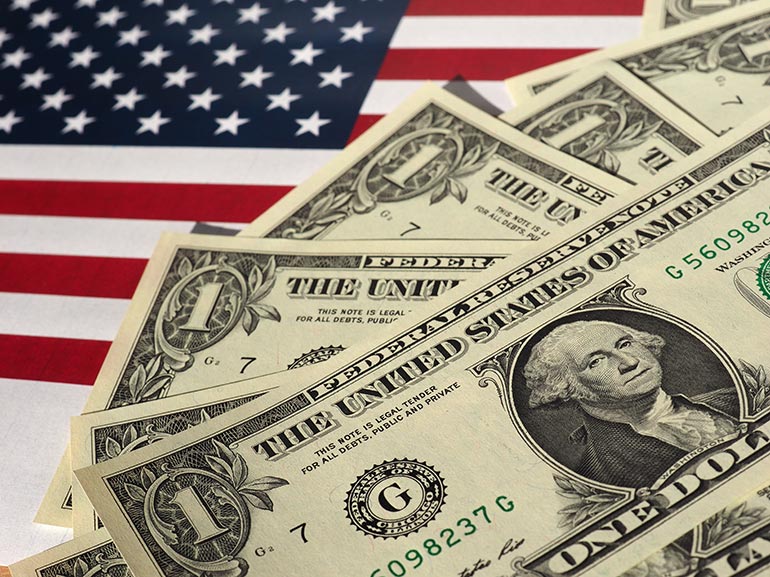Fed Rate Cut Hopes Lift Stocks, Pressure Dollar
Rising odds of a forthcoming rate cut by the Federal Reserve renewed optimism in markets on Monday, 4 August. The S&P 500 saw its best one-day return since May, and the Dow Jones erased all of Friday’s sharp losses. The rebound followed the worst daily drop since May after the release of a surprisingly weak US unemployment report.
On the flipside, the prospect of rate cuts has put the US dollar under pressure relative to other currencies and helped support a rebound in the price of gold.

TL;DR
Stocks surged Monday as traders raised bets on a September Fed rate cut following weak US jobs data; the S&P 500 and Nasdaq set new record highs.
Fed expectations shifted sharply, with markets now pricing in two rate cuts by year-end and a 94% chance of a move in September.
Political independence concerns at the Fed grew after Trump fired the Head of Labour Statistics and a Fed Governor resigned, fuelling speculation about further leadership changes.
The dollar remains under pressure, giving back some July gains as gold prices rose and interest rate differentials with other major economies narrowed.
Investors Look for Fed Stimulus
Many investors have raised their expectations for interest rate cuts following Friday’s disappointing US non-farm payrolls report, which missed expectations and saw a large downwards revision to the prior month’s numbers. The nonfarm payrolls count for the prior two months was revised down by a massive 258,000 jobs.
Trump’s dismissal of the Head of Labour Statistics and the early resignation of Fed Governor Adriana Kugler may increase the likelihood of Fed Chair Jerome Powell stepping aside soon, too.
San Francisco Fed President Mary Daly said Monday that rate cuts may soon be appropriate, pointing to signs of a slowing labour market and limited inflation risks from tariffs. Her comments follow the last Federal Reserve decision to keep interest rates steady, in which there were two dissenters, the first time there was a ‘double dissent’ since 1993.
Chances of a September rate cut have surged to around 94%, up from 63% in late July, according to CME FedWatch. Markets are now pricing in at least two quarter-point cuts (a total of 50 bps) before year-end. (Source: The New York Times)
Stocks Rally, Dollar Slides on Rate Cut Hopes
Wall Street rebounded sharply on Monday, with the Dow rising 1.34%, the S&P 500 gaining 1.47%, and the Nasdaq advancing 1.95% following Friday’s sell-off triggered by weak US jobs data.
A slight slowdown in the economy could be seen as positive for markets if it leads to more Fed easing. Still, a deeper or prolonged rise in unemployment would likely worry investors about the broader outlook for growth and corporate profits.
The dollar index (DXY) edged slightly higher on Monday, recovering some ground after a sharp decline of more than 1.3% on Friday. Lower interest rates in the US would bring it more in alignment with other major economies, including the Eurozone and the UK, which have already lowered rates several times this year, possibly leading to readjustment in exchange rates.
The dollar rose 3.4% in July, marking its strongest monthly performance since April 2022 and its first monthly gain of the year. This was helped by improving sentiment around trade policy and a run of resilient economic data. (Source: Reuters)
Conclusion
Monday’s rebound in stocks and renewed pressure on the dollar reflect growing confidence that the Federal Reserve will respond to softening economic data with rate cuts. However, political interference and uncertainty over central bank leadership add a layer of risk that markets will be watching closely going forward.
*Past performance does not indicate future results. The above are only projections.
FAQs:
Why do interest rate cuts usually help the stock market?
Lower rates reduce borrowing costs and can stimulate consumer and business spending, which supports corporate earnings and stock prices.
How does weak jobs data affect central bank decisions?
Disappointing employment figures can signal a slowing economy, prompting central banks to lower rates to support growth.
Why does the US dollar fall when rate cuts are expected?
Lower interest rates make US assets less attractive to investors, reducing demand for the dollar relative to other currencies.
What is the Federal Reserve’s role in the US economy?
The Fed sets interest rates and uses monetary policy tools to support stable prices, maximum employment, and moderate long-term interest rates.








